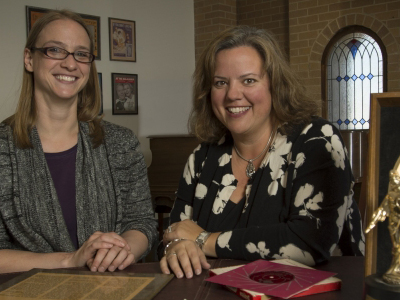
12/16/2014 - Music Library Receives the Gene Puerling Collection
In October, the Music Library received the collection of musical scores, instrumental arrangements and other memorabilia. The Gene Puerling Collection, will reside in the Special Collections section of UNT’s Music Library on the fourth floor of Willis Library. When she was a child, Jennifer Barnes just thought her parents had really cool friends. Now, the assistant professor of jazz studies realizes her dad was part of something bigger – something she has the opportunity to share with UNT students. That “something” is memorabilia from her father’s friend, Gene Puerling. Growing up, Barnes knew he was a smart guy with a witty sense of humor who sang and wrote arrangements for the vocal group in which they both sang. But, now she knows that Puerling was also a musical genius, a Grammy-award winning vocal arranger who was completely self-taught. Barnes’ father was part of two musical groups led by Puerling, The Hi-Lo’s and The Singers Unlimited. “They recorded their albums in Germany so our whole family went there,” Barnes remembered. “I was a kid so I didn’t really know the significance of what was happening musically. Turns out, there was amazing music going on.” Puerling wrote intricate, harmonically complex arrangements in his pieces for The Hi-Lo’s! and The Singers Unlimited. His work influenced countless future vocal groups, including The Beach Boys, The Manhattan Transfer, The Real Group and Take 6. Yet, he was not a formally trained musician. “He wasn’t trained to write music at the complexity level that he did,” Barnes noted. “He was writing completely by ear the kind of compositions that normally took people years and years of study to achieve. Other musicians I’ve talked to have trouble believing it.” Puerling’s widow, Helen, confirmed to Barnes that he could tap out, note by note, a song on the piano. He started his ritual by sitting down with a ham sandwich, then he’d begin to write. After his death in 2008, many universities and musicians wanted access to Puerling’s archives. However, it was the relationship with Barnes’ family and knowing that Puerling’s compositions and memorabilia will help the next generation of vocalists that piqued the interest of Helen Puerling. She was further encouraged to donate the collection to UNT because of the College of Music’s solid reputation and the fact that the Music Library has special collections of jazz legends Stan Kenton and Maynard Ferguson. The learn more, see the InHouse article From family friend to self-taught legend. music_in_the_news_collection_highlight
Posted:
12/16/2014
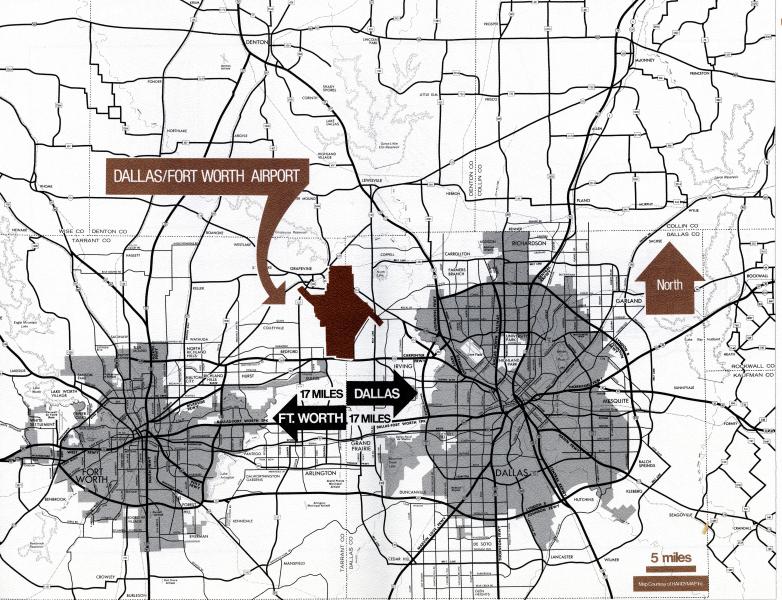
12/12/2014 - Discovering the Southwest Metroplex
UNT’s Special Collections department was awarded $164,400 through the Council on Library and Information Resources’ (CLIR) Hidden Collections program for the 2014-2016 project Post-War Industry and Development of the Southwest Metroplex. Hidden collections are those collections that reside within libraries, archives, or cultural heritage institutions; yet, are undiscoverable due to non-existent or inefficient description. The Special Collections department explored the hidden collections residing within UNT’s holdings and discovered several hidden collections that related to the explosive growth the Dallas-Fort Worth metroplex has experienced over the past 70 years. These previously undescribed or partially described collections included topics such as urban planning, politics, industry, housing, economics, industrial education and major infrastructure projects of the north Texas region such as the Superconducting Super Collider. Unlike many large American urban areas, the Dallas Fort Worth area is poorly represented in terms of collection development related to the postwar development of the region. Urban historians in particular point to the scarcity of available sources available on the topic resulting in a lack of serious scholarly research concentrated on DFW, one of the largest urban areas in the South and Southwest. Project staff immediately recognized the potential impact such collections could contribute to scholarly research and, with the assistance of the CLIR Hidden Collections grant, set about making these collections available and accessible. In addition to processing the hidden collections, project staff are publicizing the project and the collections it encompasses. A project blog is the primary outreach tool to being used to connect with the research community and public. The Discovering the Southwest Metroplex blog (https://blogs.library.unt.edu/southwest-metroplex) highlights UNT’s archival holdings by featuring some of the collections of the Post-War Industry and Development of the Southwest Metroplex project as well as other UNT collections that related to the topic. Potential topics for the blog postings are identified by the project archivist and student assistants as they process collections. They take note of any interesting finds they come across during descriptive activities that may appeal to the community and share these findings with special collections bloggers. Examples of the hidden collections and materials highlighted so far by blog posts include the winning proposal to bring the Superconducting Super Collider to Texas; early photographs of the DFW metroplex and DFW International Airport planning documents from the Lester Strother Texas Metro Collection; and documents pertaining to the Southwest Federal Regional Council from the Dr. John T. Thompson Papers collection. Blog posts also showcase previously processed collections held by UNT Special Collections that support the Postwar Industry and Development of the Southwest Metroplex theme. The most popular post is about the Frank Cuellar, Sr. Collection and describes the meteoric rise of the Cuellar family from running a small tamale booth at the Kaufman County Fair to head of the multimillion dollar El Chico corporation in the 1970s. Feedback concerning the blog has been so positive that the special collections department has determined to make the blog an ongoing activity after the projected completion date of the CLIR funded Hidden Collections project in April of 2016. Currently underway are efforts to revamp the UNT Libraries blog platform to allow for more customizable features per individual departments, better integrated image galleries and embedded video. Based on some of the feedback received from previous blog postings, another planned strategy is to begin reaching out directly to targeted communities via other social media avenues with links to postings that concern materials and collections that relate to those specific communities. The expectation is that these efforts will result in exposure to and interest in archival collections and primary source materials from communities where none previously existed. Jaime Janda, project archivist and Morgan Gieringer, head of special collections, will present a paper on this project and the Discovering the Southwest Metroplex blog at the 2015 CLIR Hidden Collections conference. The experiences being gained through UNT’s CLIR Hidden Collections project are transforming UNT Special Collections’ outreach endeavors. Through its ongoing efforts to “uncover” hidden collections, Special Collections are learning that sometimes just processing a collection is not enough, and that blogs and social media can help reveal our collections to entirely new audiences. – by Bridgett Tanner special_collections_in_the_news
Posted:
12/12/2014
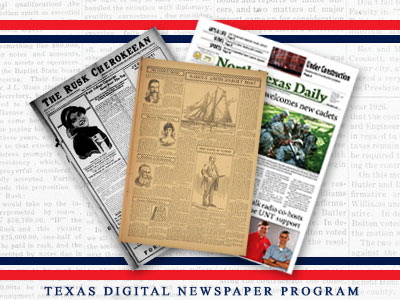
10/31/2014 - Texas Digital Newspapers Feed Historical Research on Slavery
Historical researchers from several universities are using primary source material from Texas digital newspapers to study slavery in the years before the Civil War. One innovative project places runaway slave advertisements on Twitter and then links back to the newspapers to provide context. If you walk up to Dr. Andrew Torget at the University of North Texas and Dr. Caleb McDaniel at Rice University, ask them what they think of newspapers. These professors will start to talk to you about how they look at 19th-century newspaper issues over a series of years and use them as records for reading voting patterns or for learning about slavery in Texas. Torget, McDaniel, and their students have collaborated on extensive research on newspapers available in the Texas Digital Newspaper Program to build the Texas Runaway Ads (@TxRunawayAds) Twitter feed—displaying actual runaway slave advertisements that appeared in newspapers published between 1836 and 1860 such as the Telegraph and Texas Register, the Austin State Gazette, and the Clarksville Northern Standard. According to Torget, his UNT graduate students selected these specific titles because, “They represented the three main geographies of 1850s Texas—a southeast newspaper, a northeast newspaper, and a western paper.” Those geographical regions were centers of agricultural commerce in Texas during the mid-19th century, and their newspapers are some of the earliest available in the Texas Digital Newspaper Program. This collaborative project has had significant impacts for the students working with both Torget and McDaniel, particularly in terms of how the students are able to communicate across institutions to better understand the historical period. For example, one of the most interesting and surprising finds within the Texas Runaway Ads was an ad placed by William Marsh Rice, the founder of Rice University. According to McDaniel, “It’s a very rare, important glimpse into Rice’s relationship to slavery, especially since it names the enslaved woman, Merinda, who escaped from him.” The importance of collaboration was strongly evinced by the appearance of this advertisement: it was originally located by UNT graduate students, who were then able to notify their Rice counterparts. The Rice graduate students then contextualized its significance within the wider framework of Texas history during the 19th century. This type of primary source research gives students a first-hand account of events, thus allowing them to read from multiple perspectives of people in history: “Unfortunately, the primary sources on slavery in the United States are limited. These sources are usually written from the perspective of the slaveholder and often reduce slaves to their monetary value. This can make it difficult for historians to learn about the personal experiences, attitudes, and relationships of enslaved men and women. Among these primary sources, runaway advertisements offer one of the best glimpses into the names, personalities, and experiences of individual slaves, as well as into the institution of slavery as a whole” (http://ricedh.github.io/05-twitterbot.html). The Runaway Slave Ads project goes one step further by displaying the text from ads on current social media, Twitter (https://twitter.com/TxRunawayAds). According to Dr. McDaniel, “We decided that placing the ads in social media streams, rather than on websites with standalone images of the ads, would more closely resemble the context in which they originally appeared—surrounded by other ads and quotidian news content.” During the 19th-century, and well into the 20th-century, newspapers were the social media of the day. Commonplace were ads about who visited whom in which town, who was recovering from what illness, and even who had run away from a slaveholder. According to Dr. Torget, “The idea of exploring and mapping these ads through digital means seemed to open the door to new insights into what runaway slave ads might be able to tell us about both Texas and slavery during the years before the Civil War.” The Texas Runaway Ads, in aggregate, is intended to help current researchers connect the names of people who were slaves with their geographic locations and, sometimes, family members. These ads are already opening channels of communication across the history discipline to broaden our understanding of the 19th-century before the Civil War, as Seth Rockman, Professor of History at Brown University, states on his Twitter feed. A similar project by Kyle Ainsworth out of Stephen F. Austin University is the Texas Runaway Slave Project. Intended to document the names of individual runaway slaves, this project also uses newspapers from the Texas Digital Newspaper Program with the goal of providing identity to those people about whom little primary source evidence exists. The Texas Runaway Ads and the Runaway Slave Project utilize open source technology intended to help people in the research community use digital tools to aggregate significant historical information in one place. This type of aggregation builds awareness of life in the past, provides faculty researchers with a platform for developing classroom materials, and gives students the opportunity to trace individuals across different ad postings, geographic locations, and activities. For example, the Texas Runaway Ads Twitter feed displays the runaway ads, one per tweet, and includes a link back to the original newspaper from which the individual ad originates. Any users of the feed can then use the aggregation of the ads via the feed to trace specific names, counties, or dates, but can also directly link to the newspaper page to get a rich context of an individual case. The Texas Digital Newspaper Program is dedicated to supporting any kind of research. The work that Drs. Torget and McDaniel and their students are doing exemplifies how digital humanities research can broaden our vision into the past and can open new communication pathways across research disciplines. digital_libraries_collection_highlight
Posted:
10/31/2014
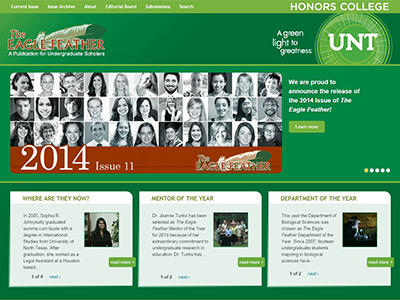
10/08/2014 - Honors College Releases the 2014 Issue of The Eagle Feather
The Eagle Feather, an interdisciplinary undergraduate research journal at UNT, celebrated the publication of Issue 11 on October 7, 2014. The Eagle Feather, an interdisciplinary undergraduate research journal at UNT, celebrated the publication of Issue 11 on October 7, The current issue contains 33 student research projects in biological sciences, linguistics and technical communication, teacher education, social and behavioral sciences, sociology, political science, and English. Highlights include: The addition of two new faculty editors — Dr. James Duban and Dr. Diana Elrod A special feature collection of poetry Inclusion of research articles produced in two of UNT’s new core capstone classes — linguistics and sociology Research articles examining the lives of women in colonial America Mentor of the year — Dr. Jeanne Tunks Department of the year — Department of Biological Sciences Where Are They Now? — Highlighting student researchers from the 2005 issue The User Interfaces Unit receives research articles in Word document format beginning in July of each year and transforms them into an electronic journal format. We have provided services and website maintenance to The Eagle Feather since 2004. user_interfaces_in_the_news_publication
Posted:
10/08/2014
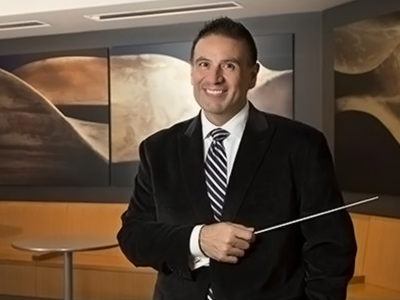
09/16/2014 - Pierrot Players to Perform Rare Work
The UNT Pierrot Chamber Players, a collection of UNT College of Music-affiliated instrumentalists and singers, will perform the challenging work of Arnold Schoenberg, an Austrian composer considered one of the most important musical contributors of the 20th century. The program will include a duo of related repertoire: the world premiere of L’Après-midi d’un Schoenberg and a UNT student arrangement of Danzón No. 2. The free concert, titled Pierrot Throughout the World, takes place at 8 p.m. Sept. 17 in Voertman Hall, located inside the UNT Music Building. To learn more, please read the full InHouse article: Pierrot players to perform rare work. music_in_the_news
Posted:
09/16/2014
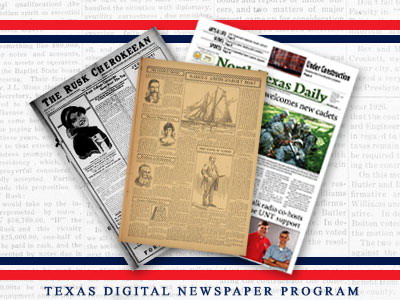
09/04/2014 - Texas Digital Newspaper Program: Two Million Pages Preserved
Recently, the Texas Digital Newspaper Program (TDNP) reached two million pages of Texas newspapers on The Portal to Texas History. Made digitally available from microfilm, physical pages, and PDF e-print editions, the newspapers offer a glimpse into daily life in Texas from 1829 to the present. Recently, the Texas Digital Newspaper Program (TDNP) reached two million pages of Texas newspapers on The Portal to Texas History. Made digitally available from microfilm, physical pages, and PDF e-print editions, the newspapers offer a glimpse into daily life in Texas from 1829 to the present. The collection represents communities from across Texas with newspapers from high schools, colleges, large cities, small towns, and special interest groups. The Digital Newspaper Team supports any kind of Texas newspaper preservation, and each member’s effort advances the larger success of TDNP and the communities who have added their newspapers to the collection. Individuals, community societies, and institutions have all contributed to the TDNP in order to preserve their heritage and support research and education on a worldwide scale. We particularly wish to thank the National Endowment for the Humanities, the Tocker Foundation, the Ladd and Katherine Hancher Foundation, and the Abilene Library Consortium for their generous patronage. The two million page milestone does not just represent the work of the Digital Newspaper Team at UNT; it also shows how much newspaper preservation and access mean to communities throughout Texas. On November 6, 2014, the UNT Libraries will host a celebration for the partners who have made this possible, at which point the Texas Digital Newspaper Program will approach 2.5 million pages! digital_libraries_collection_highlight
Posted:
09/04/2014
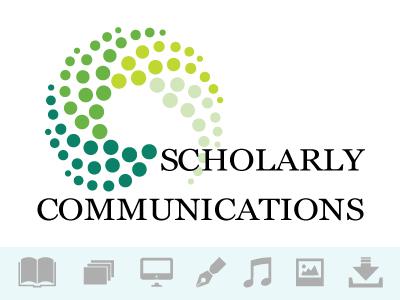
09/02/2014 - Digitized Book Images and Macaque Copyright Ownership
Historic Copyright Friendly Book Images Kalev Leetaru recently uploaded to Flickr 2.6 million fully-tagged images and drawings from various books. This endeavor is part of the Internet Archive Organization’s scanning process. Since each image is tagged, users can efficiently search for and locate images using simple keyword searches. Leetaru hopes this digital archive will serve as a historical archive that will serve those needing images. Hopefully, others will follow in uploading images that can be freely utilized by others. One option I might encourage others to include when uploading such images is to include a Creative Commons license on these items so that any doubt of subsequent use is assuaged. Macaque Selfie Most everyone read or heard about the Celebes crested macaque in Sulawesi, Indonesia taking selfies with David Slater’s camera. Now, a legal dispute exists to determine who owns the photos created by the macaques, and not by Slater. Slater of course claims that his “toil and trouble” lead to the creation of these photos, and thus he advocates it does not matter that he did not actually create the photos (he did not press the button on the camera that lead to the creation of the photo, the macaques pressed the button). In essence, Slater claims his extensive travel to the volcanic tropical forest in Sulawesi, Indonesia, and his travel through this area’s humid and dense jungle equated to his “toil and trouble.” However, in the United States anyway, a couple of problems exist in claiming copyright ownership over images created by a macaque. One such problem is that in most countries it is well established that only humans may own copyright. Further, only a creator may have copyright protection. Thus, if a macaque creates a photo, logically, no copyright exists. If animals were to own copyright one can imagine the unintended consequences. For example, if a fish rearranges the rocks at the bottom of an aquarium, and this arrangement is fixed for certain period of time, does the fish now own the copyright for this arrangement (mimicking copyright in a sculpture)? And on and on and on, this could become ludicrous. Another barrier to Slater owning copyright to these macaque produced images is that it is long established, per the Feist case, that sweat of the brow, or Slater’s “toil and trouble” does not by itself earn copyright protection. More than just sweat of the brow is mandatory, such as some modicum of originality, and more specifically some modicum of originality created from a human not a macaque. Thus, most copyright attorneys that practice in the academic industry see this story as a perfect example as to why the public domain exists, and why sometimes many creations have no owners. When an item technically does not belong to anyone, this is not a bad thing. It is actually very positive. Think of all of the creative endeavors that could result from these macaque selfies, or from other alleged animal creations (fish rearranging rocks). However, many IP attorneys outside of the academy are supporting Slater’s claim that he is entitled to the copyright of these macaque produced images. One other aspect to keep in mind is that the images were created in Indonesia, thus Indonesian law applies. It will be interesting to see whether this case progresses in the courts, and the possible judicial outcomes. public_services_in_the_news
Posted:
09/02/2014
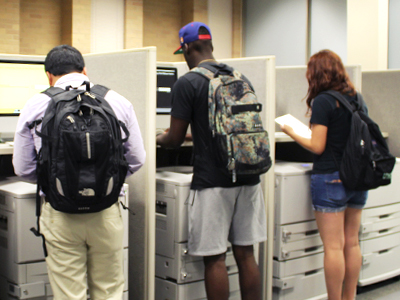
08/26/2014 - Student Computer Labs Network - Print Credit
The University of North Texas General Access Computer Lab system is now the Student Computer Labs network (SCL). New name, new logo, new print system… The University of North Texas General Access Computer Lab system is now the Student Computer Labs network (SCL). Beginning Fall 2014, the UNT Student Computer Labs will be using a print credit system. Currently enrolled students will receive a printing credit ($10.00) each semester to print academic related work in the UNT SCLs. Students can print to meet their academic needs. Students will encounter fewer printing restrictions. Students can view their current print balance at printing.unt.edu. Students will receive a fresh print credit at the beginning of each semester (Fall, Spring, Summer). Printing will be provided by the UNT SCLs at the following rates: Three cents ($0.03 per page for single-sided B&W printing Five cents ($0.05) per page for duplex B&W printing Ten cents ($0.10) per page for single-sided color (color printing is available in select SCLs) Nineteen cents ($0.19) per page for duplex color For more information, please visit Student Computer Labs Printing Information and Guidelines or contact Judy Hunter, 24 Center Administrator. facilities_operations_in_the_news_about_the_libraries_did_you_know
Posted:
08/26/2014
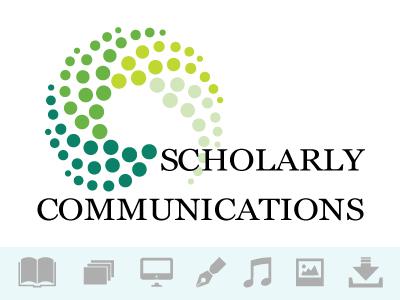
06/25/2014 - Two Cases Decided by the Supremes Today
Today, the Supreme Court released its opinion in the American Broadcasting v. Aereo case. Aereo had sold to subscribers a technology that permitted subscribers to watch television programs via the Internet at approximately the same time the programs were broadcast over the air. The Supremes decided this was copyright infringement. They concluded in this manner by determining, based on the current 1976 Copyright Act, that such dissemination of the broadcast programs equated to a “performance “ “to the public.” As part of the general bundle of copyrights, copyright holders have the sole authority to perform their copyrighted works in public. Therefore, today the Court analyzed whether Aereo had committed copyright infringement by “performing” copyrighted works “to the public.” In determining whether Aereo had made a performance, the Court cited the Transmit Clause that conveys transmitting a performance occurs when it is communicated by any device or process whereby images or sounds are received beyond the place from which they are sent. Thus, the Court determined Aereo’s dissemination of the programming was a performance because it was receiving and making a copy of broadcasts from another location. Then, Aereo subscribers could watch said broadcasts when they wanted. The Court further reasoned that when an Aereo subscriber wants to watch a program, Aereo then streamed the program over the Internet to that subscriber. Aereo therefore communicated to the subscriber via a device or process the programs images and sounds. Therefore, Aereo in effect transmitted a performance whenever its subscribers watch a program. Did Aereo perform these copyrighted works in public? The Court held yes, because the Copyright Act declares that an entity performs publicly when it performs at any place where a substantial number of persons outside of a normal circle of a family and its social acquaintances are gathered. Thus, the Court reasoned “public” consists of a large group of people outside of family and friends. The Court further reasoned that it did not matter that subscribers may be spread out over large geographic locations, the receiving of the content is still by the “public.” This is because the Transmit Clause conveys that an entity may perform publicly whether the members of the public capable of receiving the performance receive it in the same place or in separate places and at the same time or at different times. Thus, the Court held that Aereo performed copyrighted works to the public without permission or paying for a license. Also, today, in Riley v. California, the Supremes held that police need a warrant to search cell phones. In this decision, the Court noted that privacy outweighs this type of a search; law enforcement has the technological means of tracking suspicious phones; and due to the large storage capacity of modern phones, such a search would give way to an enormous digital record that might not outweigh one’s privacy. Forbes has a good blog post about this case. in_the_news
Posted:
06/25/2014
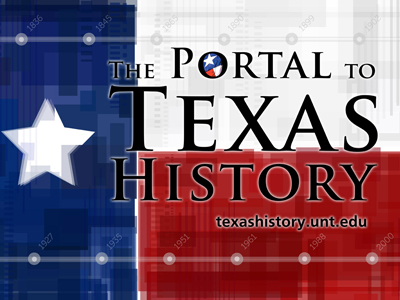
06/20/2014 - Portal to Texas History Named First Service Hub in the Southwest
The Portal to Texas History, administered by UNT Libraries to provide access to more than 385,000 digitized books, photographs, maps, newspapers, letters and other historic materials, has been named a Service Hub by the Digital Public Library of America. The DPLA Service Hubs are state or regional digital libraries that aggregate information about digital objects from libraries, archives, museums and other cultural heritage institutions within their given state or region. Each Service Hub offers its state or regional partners a full menu of standardized digital services, including digitization, metadata, data aggregation and storage services, as well as locally hosted community outreach programs, bringing users in contact with digital content of local relevance. The UNT Libraries received an award of $99,767 from DPLA to support the portal, with the award expiring March 31, 2015. To learn more, please see the full article in UNT’s InHouse: Portal to Texas History named first service hub in the southwest. user_interfaces_in_the_news_honors_and_awards_collection_highlight
Posted:
06/20/2014
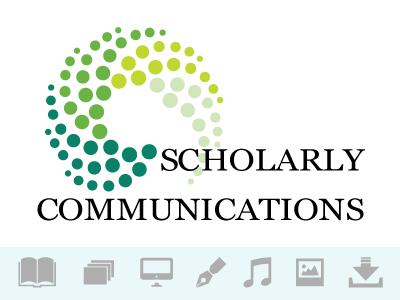
06/11/2014 - Hathi Trust Digital Library Wins on Appeal
Yesterday, the Second Circuit Court of Appeals decided four issues that support library usage of copyrighted works via fair use. The court held that 1. creating copies of copyrighted works for the purpose of making a full-text searchable database, and 2. providing those works fully accessible to individuals with disabilities are both legal under the fair use doctrine. Further, the court held that 3. the Authors Guild did not have standing to sue on behalf of other copyright holders, and 4. the issue of whether it is copyright infringement for the Hathi Trust Digital Library (HTDL) to digitize orphan works is for now a moot point, and not ripe for adjudication. Creating a full-text searchable database is fair use The court agreed with the district court that the HTDL utilization of copyrighted works to create a full-text searchable database is fair use. The Authors Guild argued that the copies themselves equated to infringement and that the database presented a security risk in that hackers could breach the database and obtain copies of copyrighted works and disseminate them freely. The court disagreed with both of these assertions, and reasoned 1. when using the database only snippet views are shown, and valid and reliable security software is implemented such as “choke,” which prevents inappropriate amounts of a document to be displayed and it thwarts mass downloads of documents. The court also heavily relied on transformative use, which I wrote about last week. Most courts currently examining copyright infringement issues are following the current judicial trend of deeming copying of copyrighted materials fair use when said use is transformative. This appellate court described in great detail that transformative use occurs when a subsequent user creates a derivative of an original work that serves a separate purpose, creates a different character, or generates a new use. This court also echoed other courts in opining that when a derivative is transformational (first factor of fair use), the other three factors do not hold as much weigh in the fair use analysis. That statement is very important for libraries, as libraries often make copies of protected works but the copies create transformative purposes. The court referenced several recent cases that followed these lines of transformational reasoning: Perfect 10, Inc., 508 F.3d at 1165; Arriba Soft Corp., 336 25 F.3d at 819; and A.V. ex rel. Vanderhye v. iParadigms, LLC, 562 F.3d 630, 639‐40. Providing these works to disabled individuals is fair use In deciding whether providing access to the copies of copyrighted works for disabled individuals is infringement, the court held such copying and provision of access was not transformational. The court reasoned that such copying did not create a new purpose, character, use… of the material. In other words, the original creation of the work was to disseminate information to a reader. The court cited other cases that reasoned that changing formats such as translations of a work from English to Spanish, or creating an audio book from a print book, are merely derivatives, not serving a new purpose, character, or use. However, the court held that such use is still fair use, and it cited legislative history and another case that stated “Making a derivative of a copyrighted work for the convenience of a blind person is expressly identified by the House Committee Report as an example of fair use, with no suggestion that anything more than a purpose to entertain or to inform need motivate the copying.” Sony Corp. of Am., 464 U.S. at 15 455 n.40. The court also referenced legislative history that declared The House Committee Report that accompanied codification of the fair use doctrine in the Copyright Act of 1976 expressly stated that making copies accessible “for the use of blind persons” posed a “special instance illustrating the application of the fair use doctrine . . . .” The court also reasoned that publishers usually do not make copies of works for the disabled, and authors usually forgo any royalties that are generated for such copies. Further, the number of accessible books currently available for the blind are approximately only a few hundred thousand, thus the market effect of such copying and access to benefit disabled individuals would be miniscule. Therefore, the court held such use is fair use. I do not completely agree that making copies for disabled individuals in not a transformational use. I am not sure other judges or justices would agree either. I do not think translations of a work, or changing formats of a work (print to audio-book) is the same endeavor as changing a print or digital work to an interface with which a disabled individual may interact. However, I suppose fair use was reached in this case based on legislative history, so perhaps the judge’s analysis is not as important to most, as long as the correct decision was made. Preservation and orphan works The court mandated that the district court reevaluate the standing issue regarding whether the HTDL can preserve digital copies of the books in this collection in perpetuity. The appellate court noted that the district court never determined whether the Authors Guild had standing to adjudicate this claim. In essence, a plaintiff has standing to sue if they have a legitimate interest in a case. For example, when Michael Jackson died, many of his family members filed lawsuits to receive the money and other legal rights to his property, and they were entitled to lawfully sue Jackson’s estate because they were his legal heirs, or they had contracts with him… However, I could not have sued to obtain notoriety rights or money from his estate because I was not mentioned in his will, I was not a blood relative… So, I would not have had standing to sue his estate. Similarly, in this case, the court notes that § 501 of the Copyright Act does not permit copyright holders to choose third parties to bring suits on their behalf. Thus, the actual copyright holders should have brought suit in regard to the preservation claim, not the Authors Guild, which does not have standing. As a side note, the copyright holders still could file suit for this preservation claim. Orphan works project In this part of the lawsuit, the Authors Guild was basically claiming that if the HTDL ever proceeded with offering orphan works for public view then whatever procedures they implemented would equate to copyright infringement. The court seemed to find such an allegation ludicrous, and rejected the issue as not being ripe for adjudication. In other words, since the HTDL is not currently offering digital access to orphan works no hardship is being presented to unknown copyright holders. The court reasoned that how could anyone know whether the procedures utilized to implement an orphan works distribution would equate to infringement when the project has been on hold. The courts refused to play soothsayers on this issue. In sum, this case is another great win for fair use and libraries. I do not completely agree with the analysis regarding whether providing access to disabled people is transformational, but it was deemed fair use none-the-less. Also, looking ahead, this decision may foretell how the Google Books case will be analyzed and decided. Also, one or both of these cases (HTDL and Google Books) may end up at the Supreme Court level. I think it would be a gamble for the Authors Guild to appeal to that level (and the Supreme Court may not even take the case on appeal), but they are well funded and they may do so. I look forward to seeing how the Google Books appeal reads. public_services_in_the_news
Posted:
06/11/2014
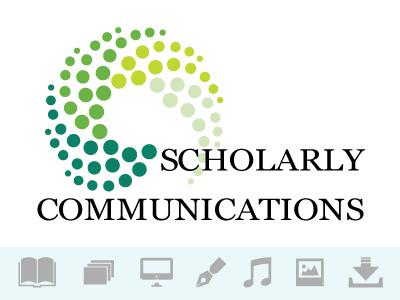
06/06/2014 - Beastie Boys, Libraries, and Copyright
Yesterday, a New York City jury awarded the Beastie Boys 1.7 million in a copyright infringement case against Monster Energy Drink. Monster apparently admitted to using Beastie Boys songs in an online advertising video without the still living Beastie Boys and the estate of Adam Yauch’s permission. The result of this case is odd when juxtaposed with a lawsuit filed by the Beastie Boys in November of 2013 against GoldieBlox, Inc. that alleged GoldieBlox, Inc. inappropriately used adaptations of the Beastie Boys’ song Girls to promote GoldieBlox toys for girls. In the GoldieBlox case, GoldieBlox successfully argued that its song adaptation was a parody of the Beastie Boys song Girls. In essence, GoldieBlox argued that its version of the song promoted women’s rights, whereas the Beastie Boys version of Girls was demeaning to women. The parties in the GoldieBlox case ultimately settled and the case was dismissed with prejudice. The GoldieBlox case presented many issues such as: 1. Can one make a parody of a parody? The original song created and performed by the Beastie Boys was considered a parody. 2. Is this second parody transformative, and thus does it create a transformative market? 3. How do ancillary legal issues affect copyright infringement cases? I think the answer to the first question is, yes, one may make a parody of a parody. As long as the second parody is poking fun of the initial creation, by definition, it is still a parody. The second question is troubling in regard to how the Monster case was ultimately decided. In the GoldieBlox case, it was assumed the Beastie Boys settled because the GoldieBlox version of the song probably created a parody that was transformative, and thus created a transformative market that did not compete against the Beastie Boys market for their version of the song Girls. Numerous courts have followed the current trend of allowing subsequent creators to use and tweak copyrighted items, and deemed such use as fair use, as long as their new creation is transformative, and it thus creates a transformative market. Perhaps the difference between the Monster and GoldieBlox cases is that Monster did not create their own version of the Beastie Boys song, unlike GoldieBlox. However, our third point, how do ancillary legal issues affect copyright infringement cases is relevant in both cases. Adam Yauch, a former and now deceased member of Beastie Boys, wrote in his will that the Beastie Boys would not license their music for advertising. In the GoldieBlox case, this seemed to weigh in favor of giving permission to GoldieBlox to create their own version of Girls and use it as they deemed necessary, because the explicit statement in Adam’s will seemed to clearly mandate that there is no readily available licensing apparatus with which to garner permission to use the Beastie Boys songs. However, the New York jury in the Monster case seemed to read the explicit statement in Adam’s will as meaning, Monster should have asked for permission to use the song Girls. It will be interesting to see whether this case is appealed. For libraries, the GoldieBlox case offers further support for the trend gaining judicial support that when someone uses a copyrighted item in a transformative way that subsequently creates a transformative market, this is considered fair use. This trend is especially gaining momentum in the non-profit world, such as libraries. However, the Monster case reminds us that other legal issues such as probate (in this case possibly licenses, although it is debatable), can affect our decision in how to use copyrighted materials. public_services_in_the_news
Posted:
06/06/2014
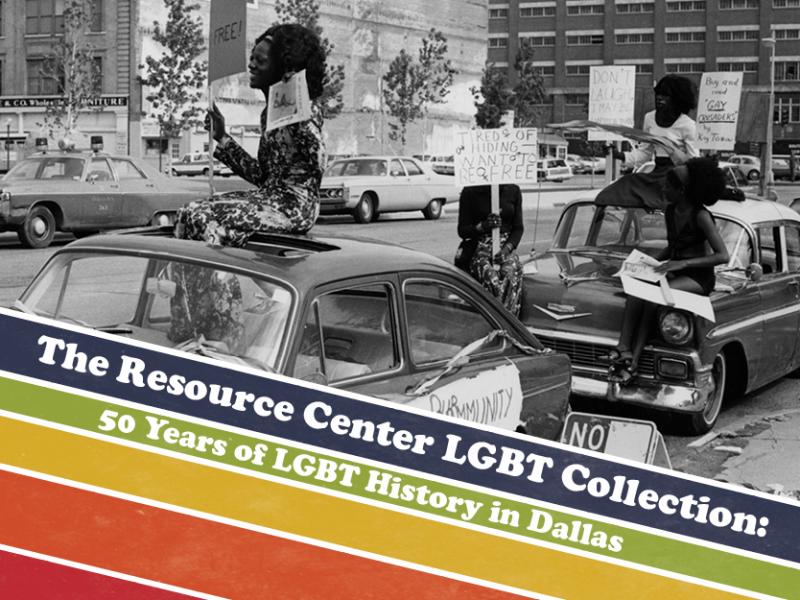
06/04/2014 - The Resource Center LGBT Collection: 50 Years of LGBT History
The Resource Center LGBT Collection: 50 Years of LGBT History digital exhibit presents materials selected from the Resource Center LGBT Collection of the UNT Libraries and documents the issues, organizations, events, and people that have impacted the LGBT community in the Dallas/Ft. Worth region and beyond. The Resource Center LGBT Collection: 50 Years of LGBT History collection contains materials donated by and relating to the groups and individuals who fought for equal rights in the LGBT community. Organizations, such as the Dallas Gay Political Caucus, the Dallas Gay Alliance (now known as the Dallas Gay and Lesbian Alliance) and the AIDS Resource Center and organizational leaders, including John Thomas, Don Baker, Bill Nelson, Terry Tebedo, William Waybourn, Mike Richards, and Cece Cox contributed papers, photographs, and personal artifacts. These materials provide an intimate and personal perspective of the triumphs and struggles experienced by the LGBT community in the Dallas/Ft. Worth region. LGBT Pride Month is currently celebrated each year during the month of June. special_collections_in_the_news_collection_highlight
Posted:
06/04/2014
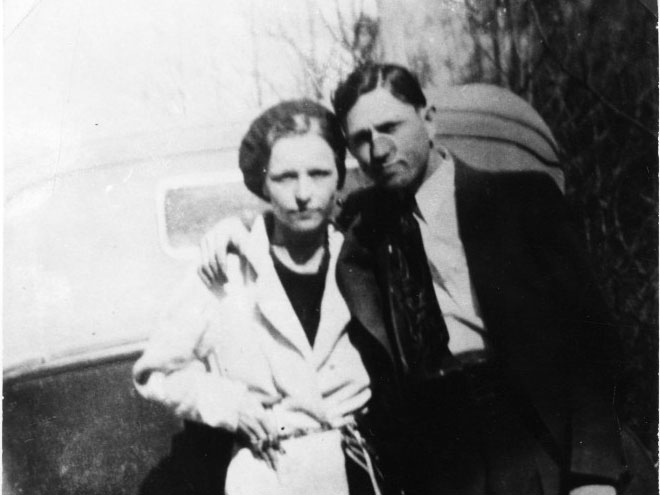
05/23/2014 - Bonnie and Clyde
Some of the most popular items in UNT’s digital collections illuminate the lives of these well-known outlaws. May 23, 2014 marks the 80th anniversary of the deaths of outlaws Clyde Barrow and Bonnie Parker, ending their crime spree. A search for “Bonnie and Clyde” in The Portal to Texas History brings up quite a few photographs of places they visited. You can also find contemporary newspaper accounts of their activities. Additionally, our Clyde Barrow Gang Collection is a highly-popular collection of items from the Dallas Municipal Archives, containing photographs as well as fingerprint cards and other police documents. In fact, four of the top ten most-used items across the entire digital collections come from the Clyde Barrow Gang Collection. Be sure to have a look! –submitted by Hannah Tarver, Head, Digital Projects Unit digital_libraries_collection_highlight
Posted:
05/23/2014
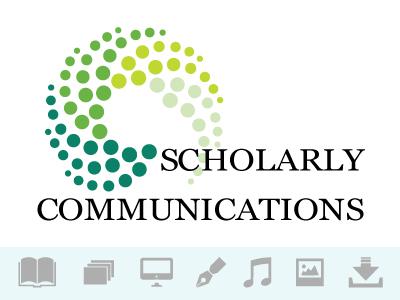
05/16/2014 - Music and Copyright
Dealing with copyrights in music always presents interesting conundrums. First, music usually has two separate copyrights, one for the musical score ©, and one for the musical sound recording ℗. Thus, like real estate (receiving mineral rights and above-the-land real property rights), when one is dealing with music, he or she must take into account both types of copyrights. A common challenge posed to libraries manifests when an acquisition of a musical item occurs, and the library or the educational institution it serves wants to post the music somewhere, perhaps in a special collections display. The librarian may have ensured during the acquisition that the donor signed over his or her rights to the musical score. However, if the rights holders to the sound recording (usually the recording studio) do not sign over their rights to the donee (the library), then the library does not have permission from the recording studio to place the item in the special collection. Of course, the librarian might be able to rely on fair use, or another statutory exception, or obtain permission form the recording studio. That said, the pertinent point is one needs to be cognizant of the fact music usually presents two separate copyrights: The creator(s) of the musical score, and the creator(s) of the sound recording. To further complicate matters, each of these separate copyrights may be further owned by multiple parties. Most musical bands create a contract at the formation of the band (after it reaches a certain notion of notoriety, starts making real money) that details how much percentage each band member owns of the band (e.g., 25%, 25%, 25%, 25%). This agreement also depicts how much copyright each band member owns. Also, the recording studio’s copyright may be broken into various percentages as well. Thus, to utilize a copyrighted song written by such a band, one would have to obtain numerous copyrights to ensure proper use, or rely on a statutory exception. Of course, many performing rights societies now make this easy by allowing one to pay a license to ensure (as much as possible) that all rights holders receive their royalty. Some of these rights societies consist of the American Society of Composers, Authors, and Publishers (ASCAP), Broadcast Music International (BMI), and the Society of European Stage Authors and Composers (SESAC). Fair use is also always an option as well. Other interesting notes about music and copyright include: Sound recordings were not given federal copyright protection in the United States until February 15, 1972. Thus, before that date, music was only subject to one federal copyright. However, most states issued some form of copyright protection for sound recordings pre February 15, 1972, and this copyright protection was usually issued in perpetuity, so it is much more restrictive than federal law. Thus, when a question arises about the use of a sound recording, it is important to attempt to decipher the date of the recording, and then whether it has state or federal copyright protection. XM Radio, for example, is currently being sued for allegedly never paying pre-1972 sound recording royalties to rights holders (they apparently did pay the royalties for the musical composition copyright). An amendment to the current United States Copyright Act in 1995 added a right to the exclusive “bundle of copyrights” given to creators of works. This right is known as the right to perform sound recordings by means of digital audio transmission. This right normally is relevant to restaurants or other public venues that perform sound recordings via digital audio transmission, and these entities also may exercise some statutory exceptions based on their venue configurations and technology used to make such a performance. However, for libraries, this right rears its head when the library houses certain sound recordings and wants to perform them publicly or via a virtual classroom. For example, interestingly, the TEACH Act 110(2) mandates that one may perform nondramatic musical works in distance education, but dramatic works may only be performed in reasonable and limited portions via distance education. Of course, both of these performances could be performed in full in face-to-face classes via section 110(1), which gives permission to “perform music.” Thus, the question is often broached, what is “reasonable and limited portions” for virtual educational use? Yet, this question has never been answered clearly by Congress or by the courts. So, fair use is probably the best bet when dealing with such an issue. Another interesting caveat when dealing with music is the statutory distinction between a sound recording and musical score for purposes of library preservation and Interlibrary Loan. For example, section 108, which governs library copying of copyrighted works for preservation, ILL, and personal study, only allows libraries to make copies of the musical scores for preservation and replacement, yet the rules allow for more liberal use when a library copies a sound recording with no accompanying music. For example, a library could copy printed sheet music and store it for preservation, but it could not copy it and disseminate it via ILL, based on section 108. However, keep in mind the library probably could copy the same sheet music and distribute it via ILL based on section 107 (fair use). In another example, a library could copy a sound recording of a presidential speech and disseminate it via ILL based on section 108 because the presidential speech does not consist of a musical composition. These are just a few examples of the fun mental labyrinths presented when copyright and the use of music collide. The take home points are to remember music usually has two separate copyrights with possibly multiple copyrights holders (although performance rights societies can sometimes simplify this matter), regardless of when the musical composition was created; look at state law pre February 15, 1972; an exclusive copyright for music includes the right to perform sound recordings by means of digital audio transmission; and sound recordings and musical compositions are sometimes dealt with differently under section 108, which dictates library preservation, ILL, and personal study use of copyrighted works. public_services_in_the_news
Posted:
05/16/2014
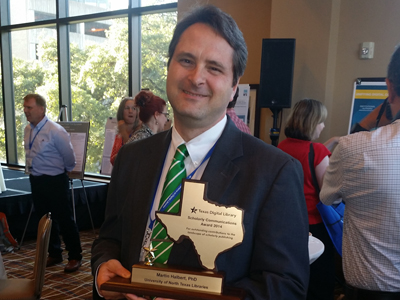
05/05/2014 - Dr. Martin Halbert Receives 2014 TDL Award
Dean of UNT Libraries, Dr. Martin Halbert, received the 2014 Texas Digital Library (TDL) Scholarly Communications Award at the annual Texas Conference on Digital Libraries (TCDL). This award honors the work of an individual or group in a Texas academic library who has made significant advances in our understanding of the issues surrounding scholarly communications and/or in developing innovative solutions to address the current academic publishing system. The contributions of Dr. Halbert to the landscape of scholarly communication and open access are significant and far-reaching, not just in Texas, but nationally and internationally. Local noteworthy accomplishments include his leadership in the adoption of the UNT Open Access Policy, our UNT Scholarly Works open access repository, and the annual UNT Libraries’ hosted Open Access Annual Symposium. Dr. Halbert has also played an instrumental leadership role with the MetaArchive, the Transatlantic Slave Trade Database, the DataRes research project on data management, the ETD Lifecycle Management project, and the Chronicles in Preservation project, as well as establishing the Aligning National Approaches to Digital Preservation (ANADP) international conference on digital preservation. These initiatives offer a sampling of Dr. Halbert’s many achievements in the field of scholarly communication and open access. We congratulate Dr. Halbert on the 2014 TDL Scholarly Communications Award and thank him for his tremendous efforts. Article by Laura Waugh Photos by Daniel Alemneh in_the_news_honors_and_awards
Posted:
05/05/2014
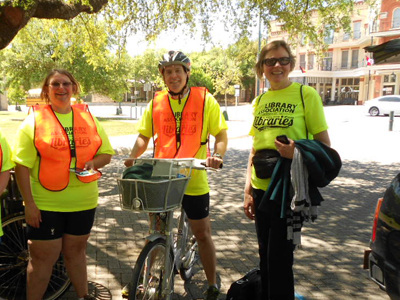
05/02/2014 - Librarians Ride in TLA's First Cycling for Libraries Event
UNT librarians Kris Helge and Susan Whitmer recently took part in the Texas Library Association’s first Cycling for Libraries event in San Antonio. The event helped to kick off the association’s annual conference. Cycling for Libraries is an international movement to raise awareness of libraries’ roles in community education and to provide networking opportunities for library professionals. The event began at San Antonio’s Riverwalk bike trail with an itinerary that included two innovative libraries on a 20-mile route. The first destination was Bibliotech, the all-digital library. Bibliotech librarians highlighted the features of this born-digital facility: computers, e-readers, smart boards, interactive furniture, reading room, and café. Bibliotech’s mission is to bring digital literacy to Bexar County. To learn more, please see the full artice in UNT’s InHouse: Librarians ride in TLA’s first Cycling for Libraries event. in_the_news
Posted:
05/02/2014
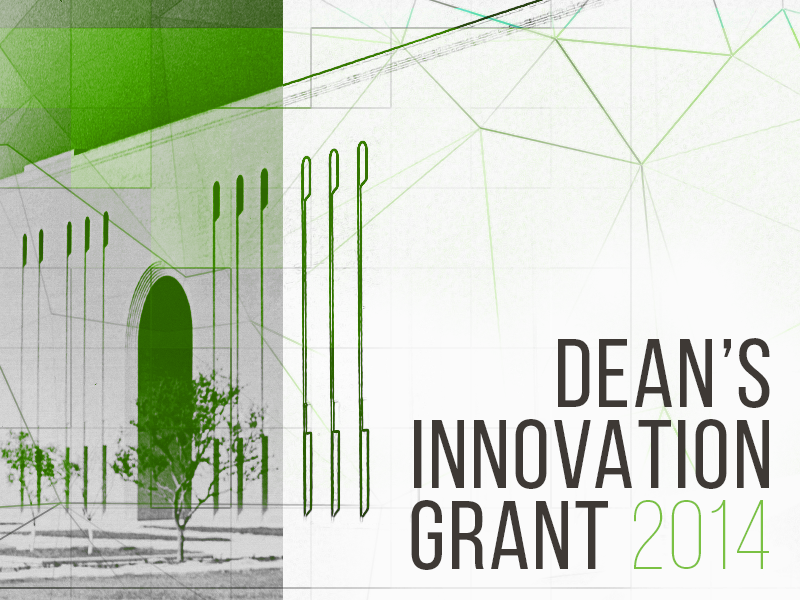
05/01/2014 - Dean's Innovation Grant 2014: Expanding UNT's Digital Libraries Reach to Africa
UNT prides itself on its diversity and its cooperation with international students and organizations. As such, the UNT Libraries collaborated with Addis Ababa University in Ethiopia to explore the feasibility and implementation of online education and digital libraries at AAU. The University of North Texas Libraries’ Dean’s Innovation Grant, formerly known as the Green Light To Greatness Award, provides funding to research and projects within the UNT Libraries that promote scholarship and contribute to the gathering of knowledge that helps improve our libraries, our university, and the community. Dean’s Innovation Grant 2014 Awardees Daniel Alemneh, Mark Phillips Project Title Expanding UNT’s Digital Libraries Reach to Africa: Facilitating Collaboration between Addis Ababa University (Ethiopia) and UNT via Digital Projects Project Description UNT prides itself on its diversity and its cooperation with international students and organizations. The UNT Libraries collaborated with Addis Ababa University in Ethiopia to explore the feasibility and implementation of online education and digital libraries at AAU. At the heart of this project was the desire to follow up on the digital libraries at AAU and see how they could integrate certain digital library efforts for the Ethiopian campus. The main projects on the table are The Portal to Texas History Model, the building of a storage facility for storing digital materials that would be optimized for the East African climate, and promoting open access for educational institutions in the region. Contributor Biographies Daniel Alemneh, Ph.D. is the Supervisor for the Digital Curation Unit. He has a Ph.D. in Information Science and a post-master’s degree in digital imaging from UNT and a Master of Library Science from the University of Sheffield in the UK. His bachelor’s degree was in library and information science from the University of Addis Ababa in Ethiopia. Mark Phillips is the Assistant Dean for Digital Libraries. He received his Master of Library Science from UNT. administrative_office_in_the_news_honors_and_awards_dean_s_innovation_grant
Posted:
05/01/2014
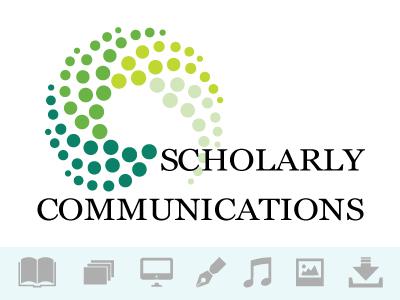
05/01/2014 - Authors Guild, Inc. v. Google, Inc., 954 F. Supp. 282 (S.D.N.Y 2013) and Fair Use Revisited
In revisiting this case, we remember that Google entered into agreements with numerous libraries such as Harvard University, the New York Public Library, and the Library of Congress to digitize millions of print books maintained in the collections of these libraries. Although most of the books Google scanned were out of print, the majority were still protected by copyright. However, each of the books protected by copyright and scanned by Google were only displayed via three snippet views as a result of a Google books search. Each snippet view also referred researchers to potential sellers of the books, such as Amazon.com. Google additionally created several limitations for each snippet view. Some of these limitations included only displaying one snippet view per page, no more than three snippet views were accessible regardless of how many times a user searched for a book, and at least one out of every ten pages of a book was redacted. The Authors Guild objected to the scanning of the books in these various collections and sued Google alleging that Google committed copyright infringement by scanning the books, giving digital copies to the participating libraries (each partner library received a digital copy of each of their own books that was scanned), and by displaying portions of books via search engine results. The district court held that such scanning was not copyright infringement, served a social utility, and was instead fair use. This case is now on appeal. In retrospect, some interesting insights manifested from this case. One of these interesting insights discussed at the Ball State Copyright Conference I attended last week was that the district court ruled in favor of fair use because Google used the copyrighted materials for a transformative purpose (for a purpose separate from the original creators’ purpose). The authors and publishers created these works to distribute information and to make money, whereas, Google used the works to create a searchable index and a location tool, which offered a new social value. Further, this transformative use created a transformative market, so it did not directly compete with the market served by the original creation. The court further noted that Google was really not directly benefiting monetarily from this transformative use. More importantly, this case and other recent cases indicated that when a court deemed a use of a copyrighted work as being transformative, the other three factors seemed to fall by the wayside. Why? The transformative purpose meets the first factor of fair use (purpose of use). Additionally, the transformative purpose creates a transformative market, thus the use complies with the fourth factor of fair use (the effect on the original market) and the transformative use does not directly compete with the original market; and the transformative use usually assuages any negative manifested issues in regard to how much of a work is used (the third factor), because the transformative nature of the use nullifies any lengthy use of the original item. In sum, when a copyrighted item is used in a genuinely transformative manner, the judicial branch is consistently changing the way it analyzes fair use. The more transformative a use, the more the concerns with commercial effect and how much of an item is used becomes less important. Therefore, this is a reminder, that for now, fair use and transformative use is a fruitful tool for libraries to utilize when using copyrighted items. Although Congress is currently reviewing the modern Copyright Act, and it may issue a proposed new Act in one of the next sessions, the Judicial Branch’s current interpretation of fair use is greatly benefiting libraries in America. Therefore, it might not be a bad result for libraries if Congress leaves the current Copyright Act as-is. public_services_in_the_news
Posted:
05/01/2014
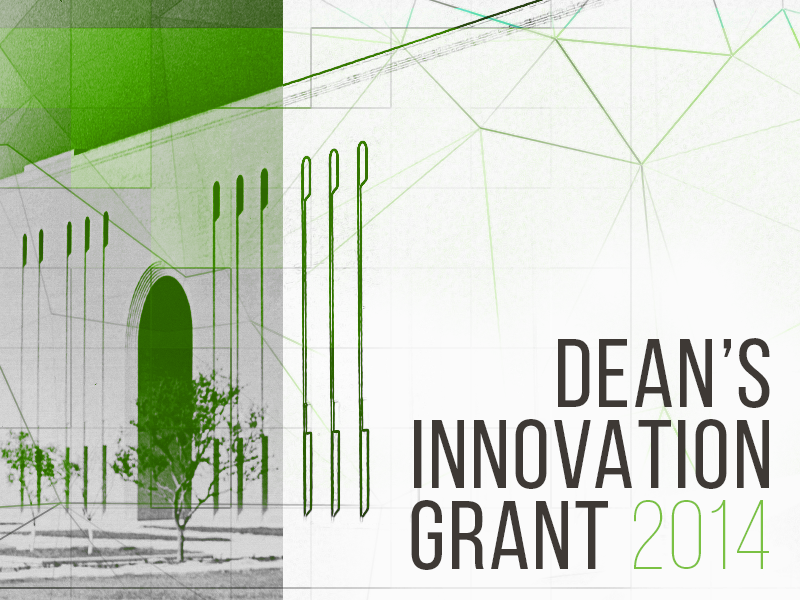
05/01/2014 - Dean's Innovation Grant 2014: Second Floor Space Planning
One of UNT Libraries’ overarching missions has always been to create an environment where students could learn and study. This project built upon this goal by observing other academic libraries’ study spaces and coming up with a recommendations to improve the second floor of Willis Library. The University of North Texas Libraries’ Dean’s Innovation Grant, formerly known as the Green Light To Greatness Award, provides funding to research and projects within the UNT Libraries that promote scholarship and contribute to the gathering of knowledge that helps improve our libraries, our university, and the community. Dean’s Innovation Grant 2014 Awardees Mary Ann Venner, Kris Helge, Laura McKinnon Project Title Second Floor Space Planning Project Description One of UNT Libraries’ overarching missions has always been to create an environment where students could learn and study. This project built upon this goal by observing other academic libraries’ study spaces and coming up with a recommendations to improve the second floor of Willis Library. Contributor Biographies Mary Ann Venner is the Assistant Dean for Personnel. She has a Master of Library Science from UNT. administrative_office_in_the_news_honors_and_awards_dean_s_innovation_grant
Posted:
05/01/2014
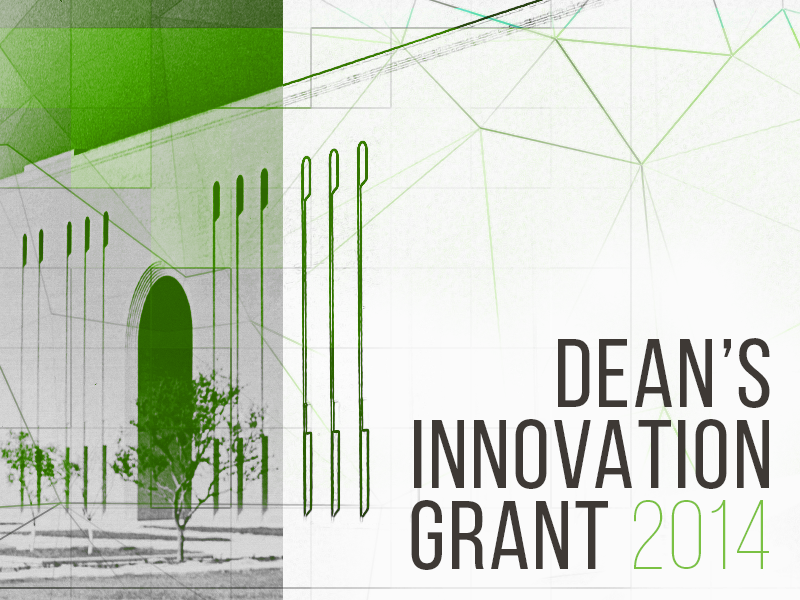
05/01/2014 - Dean's Innovation Grant 2014: MINES for Libraries
MINES is a program that is used for measuring usage of library resources through short, random surveys that ask users about their relation to the institution they’re using, their location, and general feedback about the resources. The goal of this project was to use MINES for Libraries to find out the reasons for electronic resource usage and information about the people who utilize them. The University of North Texas Libraries’ Dean’s Innovation Grant, formerly known as the Green Light To Greatness Award, provides funding to research and projects within the UNT Libraries that promote scholarship and contribute to the gathering of knowledge that helps improve our libraries, our university, and the community. Dean’s Innovation Grant 2014 Awardees Karen Harker, Sian Brannon, Frank Gosnell Project Title MINES for Libraries: Usage of Electronic Resources Project Description MINES is a program that is used for measuring usage of library resources through short, random surveys that ask users about their relation to the institution they’re using, their location, and general feedback about the resources. The goal of this project was to use MINES for Libraries to find out the reasons for electronic resource usage and information about the people who utilize them. Contributor Biographies Karen Harker is the Collection Assessment Librarian in Collection Development. She received her Master of Library Science from TWU and has a Master of Public Health from the UT School of Public Health. Sian Brannon, Ph.D. is the Associate Dean for Collection Management. She has a Ph.D. from TWU and a master’s degree from UNT, both in library science. Frank Gosnell is the Libraries Programmer and Virtual Infrastructure. administrative_office_in_the_news_honors_and_awards_dean_s_innovation_grant
Posted:
05/01/2014
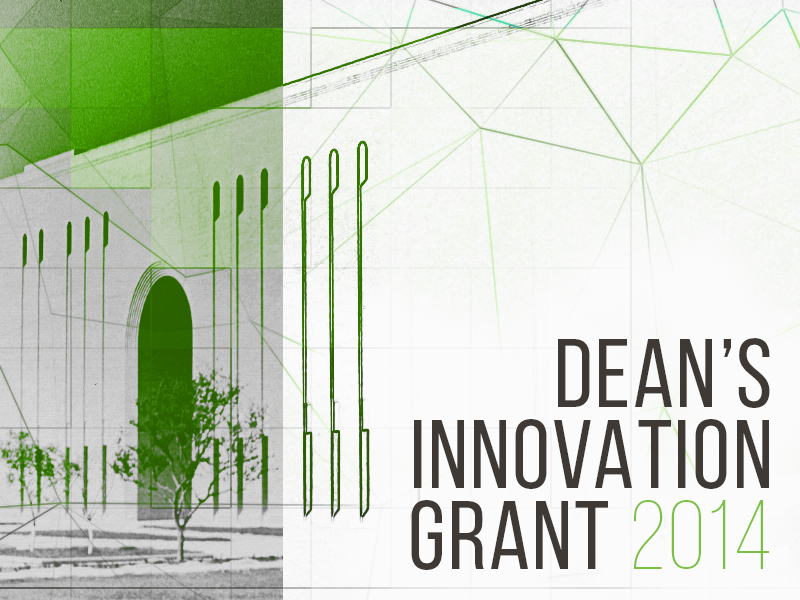
05/01/2014 - Dean's Innovation Grant 2014: Experimental Fundraising Initiatives
Denton sits right in the middle of horse country.This project is a reflection of that and encourage the development of fundraising projects to support horse and ranching photography collections in the UNT Special Collections. It incorporates the horse ranching community already within the area, and developing collections from their history and culture. The University of North Texas Libraries’ Dean’s Innovation Grant, formerly known as the Green Light To Greatness Award, provides funding to research and projects within the UNT Libraries that promote scholarship and contribute to the gathering of knowledge that helps improve our libraries, our university, and the community. Dean’s Innovation Grant 2014 Awardees Morgan Gieringer Project Title Experimental Fundraising Initiatives Project Description Denton sits right in the middle of horse country. This project was inspired by the community that has grown around horse ranching and explored the development of fundraising projects to support horse and ranching photography collections in UNT Special Collections. It incorporates the horse ranching community already within the area, and develops collections from their history and culture. Contributor Biographies Morgan Gieringer is the Head of Special Collections. She has a Master of Library Science from TWU. administrative_office_in_the_news_honors_and_awards_dean_s_innovation_grant
Posted:
05/01/2014
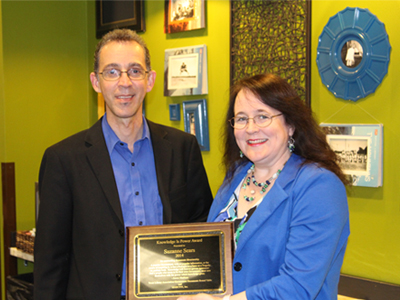
04/25/2014 - Assistant Dean for Public Services Suzanne Sears Receives Two TLA Awards
Suzanne Sears, Assistant Dean for Public Services received two distinguished awards at this year’s Texas Library Association Conference in San Antonio. The TLA GODORT/MARCIVE “Knowledge is Power” Award recognizes an individual who is an outstanding Government Documents Librarian and active supporter and advocate for the use of government information in education, research, and/or commerce. Active support of government information access can take the form of presentations, scholarly papers, Web resources, or any other appropriate creative activity. The award recognizes past as well as present government information involvement. MARCIVE, Inc., of San Antonio, very generously sponsors the award with $400 to express appreciation to the recipient. Suzanne was nominated by Julie Leuzinger for the “Knowledge is Power” Award. Coby Condrey was chair of the committee and presented Suzanne with the TLA GODORT/MARCIVE “Knowledge is Power” Award. Since 1960, the Texas Library Association has honored and recognized excellence in librarianship and outstanding contributions to Texas Libraries through awards presented annually at the TLA spring conference. The TLA Distinguished Service Award is given in recognition of demonstrated leadership and continuing service in one or more areas of the library profession. Mary Ann Venner nominated Suzanne for the TLA Distinguished Service Award. Featured image: Coby Condrey, Collection Development Librarian and Suzanne Sears, Assistant Dean for Public Services Photographs by Joshua Sylve public_services_in_the_news_honors_and_awards
Posted:
04/25/2014
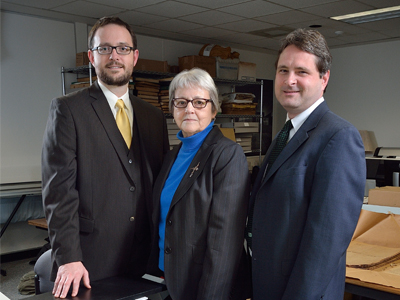
04/18/2014 - UNT Known for Making Information Accessible in the Digital Age
During a visit to her small East Texas hometown, Cathy Hartman, associate dean for the University of North Texas Libraries, was surprised to learn from a fellow restaurant customer that he had seen the 1924 teaching contract of her aunt, Pearl Vinson. During a visit to her small East Texas hometown, Cathy Hartman, associate dean for the University of North Texas Libraries, was surprised to learn from a fellow restaurant customer that he had seen the 1924 teaching contract of her aunt, Pearl Vinson. The document, preserved online on UNT’s Portal to Texas History, stated that Vinson would teach for seven months at Cross Roads Elementary in Cass County, receiving $85 per month. The teaching contract is more than just history for Hartman’s family. It’s an example of the primary source materials from libraries, museums, archives and private donors that provide portal users with glimpses of past life in Texas. “Unless you could travel all over the state, you wouldn’t be able to see all of these items, especially since some of the smaller libraries’ and museums’ collections aren’t widely publicized. Even if they had the content on their websites, chances are it wouldn’t show up in the first 100 pages of a search engine hit list,” Hartman says. “But the portal, which has more than 6 million visitors per year, is indexed by Google and all other search engines. Its content is generally at the top of the results page.” Photo by Michael Clements digital_libraries_in_the_news_about_the_libraries_collection_highlight
Posted:
04/18/2014
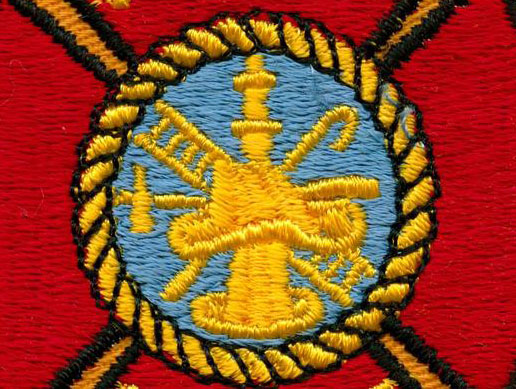
03/28/2014 - Fire Museum of Texas Patch Collection
Among the digitized physical objects in the Portal is a collection of uniform patches from city and volunteer fire departments all over the state of Texas. Among the digitized physical objects in the Portal is a collection of uniform patches from city and volunteer fire departments all over the state of Texas. Selected from the larger collection at the Fire Museum of Texas these colorful patches help to tell the history of fire service in the state. –submitted by Nancy Reis, Communications Specialist, Digital Libraries Division digital_libraries_collection_highlight
Posted:
03/28/2014
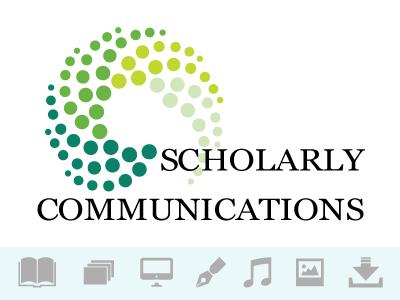
03/12/2014 - Publishing Models and Open Access
SCOAP3 Two catalysts of the advent of open access include decreasing library budgets and increasing publisher fees. Consequently, publishers and libraries are experimenting with various fee and payment models to better serve their respective customers. One horizon library payment model is called the Sponsoring Consortium for Open Access Publishing in Particle Physics (SCOAP3). SCOAP3 consists of a consortium of libraries, funding agencies, and research centers located in over two-dozen countries that are aggregating funds to pay publisher costs to enable selective High-Energy Physics journals to become available via gold open access. Subsequently, publishers of these journals offer lower subscription fees to the contributors who help subsidize the SCOAP3 endeavor. Further, the articles published in these High-Energy Physics Journals are licensed with a CC-BY Creative Commons license, and thus this license alerts potential users that these articles may be further distributed, tweaked, used for commercial or non-commercial purposes, used for any educational endeavor (making paper or digital copies for students…), or for any other purpose as long as proper attribution is given. Articles that are published using SCOAP3 funds are also placed into the SCOAP3 Repository, which creates even greater reliable access to valid information. Cengage and McGraw Hill Publishers are also experimenting with new conduits of offering educational information. I recently attended a luncheon sponsored by Cengage Learning at the University of North Texas Center for Learning Enhancement, Assessment, and Redesign (CLEAR). At this luncheon, Cengage introduced a couple of products to meet the changing needs of students. In displaying this new product, Cengage cited research that claimed many students simply cannot afford to purchase expensive print textbooks, and even if text books are purchased, students rarely read the content inside. Therefore, Cengage is experimenting with an interactive digital interface that offers some text, interfaces similar to Second Life where students can construct items, digital venues in which students may participate in augmented reality science labs, and digital locations where students may interact with other students online. I attended another luncheon with CLEAR that was sponsored by McGraw Hill. McGraw Hill also is experimenting with interactive digital content called McGraw Hill Connect that is subject specific and that can be implemented for one or two academic periods. Such content offers interactive videos, audio, and text; and is offered in lieu of print textbooks. It additionally proffers periodic reviews and quizzes to help students ensure they know materials before taking an exam, and the quizzes also assist professors in remaining cognizant of student progress. Which is the better approach? These separate approaches do not equally meet the needs of information seekers. SCOAP3, although a gold open access platform, is an innovative way to help users effectively locate needed information. Although a truly green open access platform is preferred, SCOAP3 provides an acceptable compromise that helps create a wider dissemination of High-Energy Physics information, especially with each article being deposited into the SCOAP3 Repository. Also, by using Creative Commons licenses, potential users are immediately cognizant that they may use this content for most any purpose as long as they give proper attribution to the author. Although the Cengage and McGraw Hill approaches are both interesting, neither method really encourages the widespread dissemination of needed information. Realizing this publisher created content is not paid for by a consortium such as SCOAP3, the only individuals who can view this content are those registered in a specific class at UNT, and those registered students must have a password to view and interact with the content. The Cengage and McGraw Hill content also are not licensed with a Creative Commons license, which further prevents the widespread flow of dissemination. Additionally, an interesting note brought up by a representative at CLEAR is that currently less than one percent of the students at UNT purchase digital content at the UNT bookstore. If students’ materials are offered via digital venues, a large majority of UNT students supposedly choose not to purchase it. The publishers at the luncheon countered this statistic and suggested that a majority of students nation-wide are not purchasing print content either. It seems to me, both pieces of evidence that suggest students are not purchasing course required content (whether print or digital) support the creation of more green open access platforms that deliver students gratis, easily located, valid and reliable information. This is the type of access for which the Coalition of Open Access Policy Institutions (COAPI) continues to advocate, and I think it is the type of access we all should continue to demand. Perhaps if such content were more readily available, then regardless of the format, students would be more likely to use the content and better their educational opportunities. public_services_in_the_news
Posted:
03/12/2014
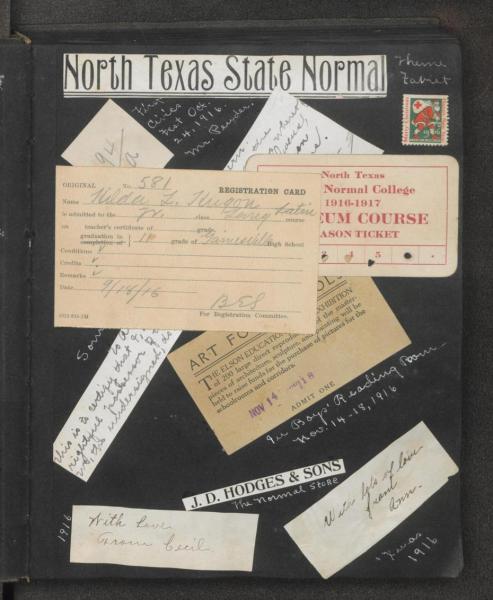
02/17/2014 - North Texas State Normal College Scrapbook
We have recently added to the Portal a scrapbook compiled by Hilda L. Hugon from 1916-1918 during her junior and senior years at North Texas. We have recently added to the Portal a scrapbook compiled by Hilda L. Hugon during her junior and senior years at North Texas. Covering 1916-1918, the scrapbook includes photographs, newspaper clippings, event programs, and other items collected by Hugon–with handwritten annotation. Among the photographs, you can see views of early campus buildings as well as houses on Hickory and Sycamore Streets. Don’t miss “The Librarian’s parting gift!” on page 88. You may also be interested in The Yucca, Yearbook of North Texas State Normal School from that time period. –submitted by Nancy Reis, Communications Specialist, Digital Libraries Division digital_libraries_collection_highlight
Posted:
02/17/2014
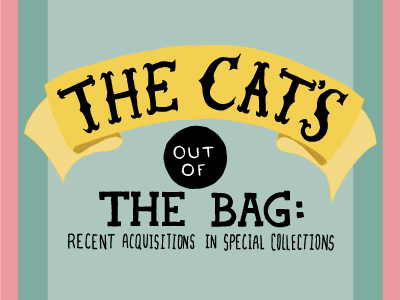
02/17/2014 - The Cat's Out of the Bag: Recent Acquisitions in Special Collections
The origin of the phrase “letting the cat out the bag” is not clear. Some believe that the phrase did not first appear in print until 1760—33 years after our recently acquired first edition of Les Chats (The Cats) was published in France. Regardless, the phrase holds true for this exhibit of recent acquisitions, seen here for the first time since arriving at UNT. The items selected for this exhibit demonstrate the full breadth of special collections. Highlights include works from the University Archive, the fine press and print history collection, the artists’ book collection and modern manuscript collections. Collections of folk art and antique cameras in this display are just a small sample of the extraordinary artifacts in special collections. An online preview of The Cat’s Out of the Bag: Recent Acquisitions in Special Collections can be found on the University Libraries’ Exhibits website. This exhibit in Special Collections will be on display until May 9, 2014. Location Willis Library, Room 437 Exhibition Hours special_collections_in_the_news_collection_highlight
Posted:
02/17/2014
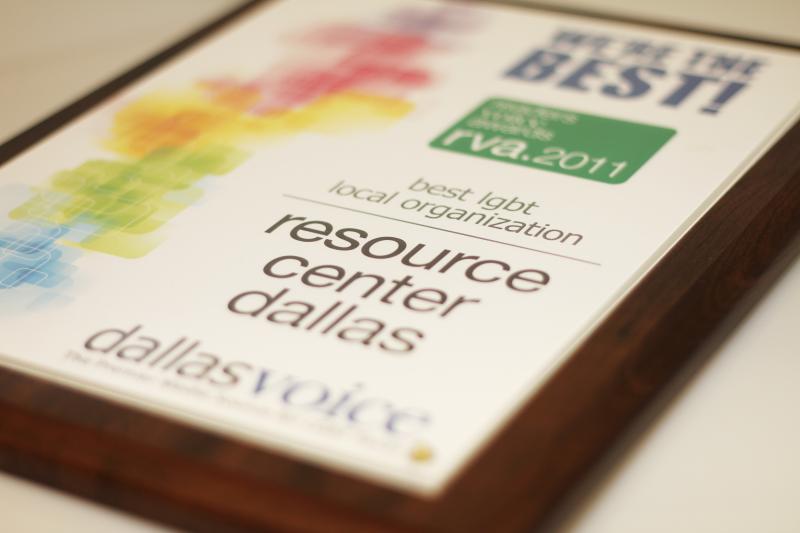
02/10/2014 - Best Picture Oscar Nominee Has Ties to UNT Libraries
When the creators of the Oscar-nominated movie “Dallas Buyers Club” needed to better understand the AIDS crisis among the city’s gay community during the 1980s, they only had to contact the UNT Libraries. Since August 2012, the UNT Libraries’ Special Collections department, formerly known as Archives and Rare Books, has housed a letter from Ron Woodroof, who started the Dallas Buyers Club to obtain non FDA-approved drugs for AIDS after being diagnosed with the disease; 10 Dallas Buyers Club newsletters, which were read by AIDS patients around the world who received the drugs from Woodroof; and a photograph of the medication, which is featured in the film. They are just some of the approximately 100 items from Woodroof that were originally part of the Phil Johnson Historic Archives and Research Library at Dallas’ Resource Center, which is one of the largest LGBT community centers in the U.S. In August 2012, the Resource Center donated the archives to the UNT Libraries. The collection is now known as the Resource Center LGBT Collection and includes approximately 100,000 items. Some of the items connected to Woodroof can now be viewed anytime online through the UNT Digital Library. To learn more, see the full article in UNT’s InHouse: Best Picture Oscar nominee has ties to UNT. special_collections_in_the_news_collection_highlight
Posted:
02/10/2014

02/06/2014 - Anti-Valentine Books - February Book Display
“The most fatal thing a man can do is try to stand alone.” ―Carson McCullers, The Heart is a Lonely Hunter “Books are the ultimate Dumpees: put them down and they’ll wait for you forever; pay attention to them and they always love you back.” —John Green, An Abundance of Katherines “Have you ever been in love? Horrible isn’t it? It makes you so vulnerable. It opens your chest and it opens up your heart and it means that someone can get inside you and mess you up.”―Neil Gaiman, The Sandman, Vol. 9: The Kindly Ones “Perhaps all the dragons in our lives are princesses who are only waiting to see us act, just once, with beauty and courage. Perhaps everything that frightens us is, in its deepest essence, something helpless that wants our love.”―Rainer Maria Rilke, Letters to a Young Poet “It isn’t possible to love and part. You will wish that it was. You can transmute love, ignore it, muddle it, but you can never pull it out of you. I know by experience that the poets are right: love is eternal.”―E.M. Forster, A Room with a View Stop by the New Books Area in Willis Library on the first floor to check out our themed book display. To learn more, see the complete list of the books on display this month. public_services_in_the_news
Posted:
02/06/2014
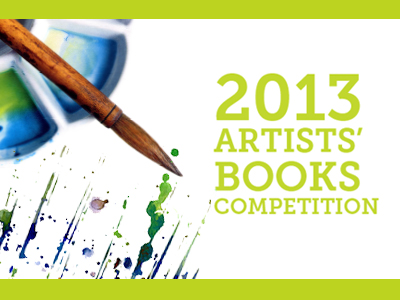
01/31/2014 - 2013 Artists' Books Competition Exhibit
Entries in the seventh Artists’ Books Competition and Exhibition will be on display in the Willis Library Forum, Room 140 from January 24 - June 13, 2014. Sponsored by the Friends of the UNT Libraries, this bi-annual contest is open to UNT faculty, staff, students, and the community at large. Artists’ books date to the early medieval period and may be created with handwritten texts that are merged with illustrations, fabric covers, scrolls, foldout content or loose items contained in a box. These books may or may not have content that can be read, and may be produced as one-of-a-kind objects. Adam Rowlett is the purchase prize winner of the UNT Libraries Biennial Artists’ Books Competition and Exhibition 2013 for his book, Heavens. Heavens is described by the artist as “a short, illustrated narrative employing geometric abstractions.” Rowlett was named Best New Artist by the Dallas Observer in 2012 and is a graduate student at UNT (MFA ‘14). His work will be cataloged and permanently added to the Libraries’ artists’ book collection. Heavens is currently on display in the Judge Sarah T. Hughes Reading Room, Willis Library, Room 437. special_collections_in_the_news
Posted:
01/31/2014
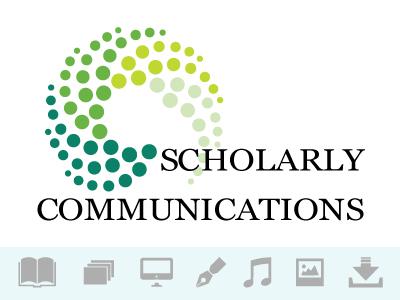
01/29/2014 - A Hearing Regarding Fair Use and Baby Steps Toward Open Access
Subcommittee Hearing Regarding Fair Use Yesterday, the Subcommittee on Courts, Intellectual Property, and the Internet of the Judiciary Committee heard testimony regarding fair use. This testimony was in response to the actions of some members of Congress currently considering whether to propose a bill to statutorily expand or minimize fair use. The individuals who testified at the hearing yesterday included Professor Peter Jaszi, the faculty director of the Glushko-Samuelson Intellectual Property Clinic at the American University Washington College of Law; Professor June Besek, the Executive Director of the Kernochan Center for Law, Media and the Arts at the Columbia Law School; Ms. Naomi Novik an author and co-founder of the Organization for Transformative Works; Mr. David Lowery, a singer, songwriter, and lecturer at the Terry College of Business at the University of Georgia; and Mr. Kurt Wimmer, the General Counsel at the Newspaper Association of America. Each of these individuals offered written and oral testimony that covered the full gamut of how numerous individuals believe how fair use should be applied to new digital technologies. Before examining some of the testimony given by these individuals, let us quickly reexamine the doctrine of fair use. According to the doctrine of fair use, one may use another creator’s copyrighted work, or portion of their work when the subsequent user meets the standards laid out in the fair use test. Also remember, although originally created by case law, fair use is a statute that has been passed by Congress. In general, if one meets three or more of the four prongs in the statutory fair use test, he or she should feel confident in using a copyrighted work. If one meets only two prongs of the test, there is some risk involved. If one meets only one or less of the prongs of the fair use test, then one should look to similar items that meet the fair use test, that are licensed for use with a Creative Commons license, that are designated as open access, or one should return to the tabula rasa and commence a new path. In reviewing the above-mentioned statute, some members of Congress recently stated they would like to either expand or contract the doctrine of fair use, hence the subcommittee hearing yesterday. As predicted, the testimony at this hearing varied as some quipped pro-expansion comments and others advocated for contraction in the utilization of fair use. For example, Kurt Wimmer’s testimony seemed to suggest he believed fair use was working well with the transition of print newspapers to a digital format. Naomi Novik, who co-founded the Organization for Transformative Works advocated that fair use should be expanded and strengthened to meet the needs of new digital technologies. Whereas, Professor June Besek at the Columbia Law School advocated for a contraction of fair use warning that interpreting the fair use doctrine with few boundaries to what a subsequent user may do with a copyrighted work is worrisome. Despite the attention to the hearing yesterday, it is unlikely Congress will amend the fair use doctrine any time soon. For one thing, this current Congress does not have a stellar record of passing a lot of legislation. If an amendment did pass, it likely would be tacked on to a larger piece of legislation. However, not tweaking fair use, for now anyway, is probably positive for libraries. Remember when legislation is passed it is up to our courts to interpret the legislation, and that interpretation is usually to what citizens, libraries, and other entities are supposed to adhere. Today, despite various appeals and possible negative oral argument at the appellate level, it still appears that the progress of such cases as Cambridge University Press v. Becker and the Authors Guild v HathiTrust reveal positive headway for libraries and the academy’s use of materials for educational purposes via fair use. Further, for those who do not like the manner in which fair use is currently being implemented, have you ever heard the saying “the devil you know is better than the devil you do not know?” In other words, if Congress tweaks or issues a massive overhaul of the fair use doctrine the courts would ultimately be given a fresh stab at interpreting such newly revised legislation. Since the judicial progress of cases interpreting our current version of the fair use statute is mostly pro-use, if you will, it might behoove libraries if Congress leaves fair use as is, for now, and instead consider offering a more liberal approach to section 108 of title 17 of the United States Code. Such liberalization of this statute could offer more explicit latitude for libraries to digitize content and make it publicly available. Also, it would be helpful if Congress would give more consideration to passing legislation that strengthens open access without extended embargoes. Omnibus Appropriations Bill Speaking of open access, Congress recently passed an Omnibus Appropriations Bill that is a step in the right direction in improving access to taxpayer-funded research. This legislation directs federal agencies (with research budgets more than $100 million per year) within Labor, Health, and Human Services and Education to provide online access to articles funded by that research, however, these articles may be subjected to a 12 month embargo. This legislation is more legally robust than the White House Office of Science and Technology Policy (OSTP) Directive on Public Access issued by President Obama a few months ago, however, it is hopeful Congress will soon consider putting forth legislation that promotes open access and does not permit such extended embargoes. For example SPARC is currently calling for this law to be strengthened by decreasing the embargo period to 6 months, making access to these materials available via a centralized repository, and providing universal access to these materials. public_services_in_the_news
Posted:
01/29/2014
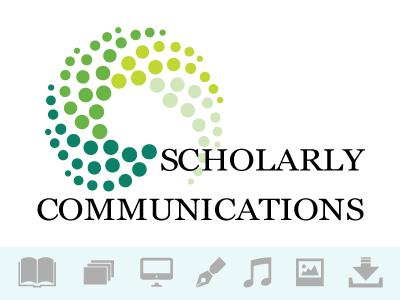
01/15/2014 - Disseminating Information (Disinformation) With The Click Of A Button
The Internet and social media sites such as Facebook and Twitter can present conundrums when juxtaposing them with the law as it is written, and certain individual posts. For example, in 2012, a libel lawsuit manifested after the American Career College terminated an employee. After termination, the ex-employee allegedly posted libelous information about the College on Wikipedia. As is noted in that case, in determining whether written statements are libelous, courts must weigh any real harm to the plaintiff against a defendant’s First Amendment right to free speech. Another concern in this case involved the potential for such alleged libelous statements to be copied, pasted, and disseminated to thousands or more individuals with a couple of clicks. Of course, all of which could be done by utilizing various social media platforms. These types of cases where an individual’s right to free speech and an entity’s (for-profit or not-for-profit) right to not be defiled in writing are becoming more prevalent. For example, in 2009 a student at Butler University posted statements to a personal blog that the University administration perceived as defamatory (libelous). The University administration initially sued the student, not knowing this student attended Butler University. Upon learning this student attended their own University, this lawsuit was apparently settled. It is noted that such a lawsuit and other similar cases challenge the standard of academic freedom of students, faculty, staff, and all members of academies established by Chief Justice Earl Warren in his comments conveyed in Sweezy v. New Hampshire decided in 1957. Sweezy v. New Hampshire, 354 U.S. 234 (1957). Two other apropos lawsuits filed a few weeks ago further illustrate the free speech/libel dilemma. These two cases are pending in Texas and involve family arguments, employment disputes, and alleged libelous actions. One case involves an owner of a funeral home who is asking the Texas Supreme Court to issue a permanent injunction to prevent a family member from repeating (resending on Twitter, Facebook, Wikipedia…, or posting to a website) ten specific statements deemed false by a Bastrop County jury. In a second case before the Texas Supreme Court, a business owner is asking the court to mandate a former employer to remove statements from two websites that are allegedly libelous. Why should we care about such libel lawsuits? Only one of the above-mentioned cases involves a non-profit university, however, such accusations of libelous conduct may become more common as instructors implement more Web 2.0 and Web 3.0 in their pedagogy. Also, students freely post about university related matters on their personal blogs, Facebook, and other social media sites, similar to the student at Butler. Further, the costs of these lawsuits can be astronomical. For example, in the funeral home case mentioned above, the jury awarded $4.5 million to the funeral home, due to the defendant’s alleged libelous statements. Even if a defendant is found not liable of defamation, attorney’s fees alone can be stellar. For example, in 2012, during a separate employment related libel case in Tarrant County, Texas, a court awarded the plaintiffs $14 million as damages. This award was overturned on appeal, yet the defendant’s legal fees totaled just over $1 million. The pertinent point is with the ease of disseminating information (disinformation), statements distributed electronically could be interpreted as defamatory by an audience. Thus, it is important to provide training to staff, faculty, students, and the greater university community regarding what is defamation (libel, slander), what is private information, and how to prevent a breach of either kind. Further, it is wise to provide training regarding what is and is not acceptable in regard to posting to blogs, Facebook, Twitter, and other Web 2.0 sites. Additionally, pass along this training to students; closely monitor student posts in online courses; if a student makes a mistake, use the blunder as a teachable moment; create an internal retraining and/or judicial process to deal with alleged misconduct; create a centralized site that the university community may consult to educate themselves; and on this site offer a comment box on which individuals may post questions and receive answers to their queries. In sum, it is important to be cognizant of the different types of defamation in general: slander (spoken); libel (written). It is also wise to be careful what one puts in writing, but also defend your right to academic freedom in putting what you want in writing. Further, it is astute to educate students on such matters, and use any student missteps as educational opportunities for said students. It will additionally be interesting to discover how the Texas Supreme Court holds in the two above-mentioned cases, so that we may envisage how a similar scenario occurring in the academic library setting might result. \ public_services_in_the_news
Posted:
01/15/2014
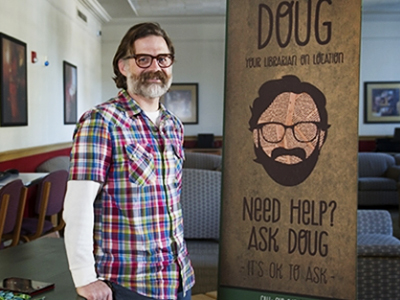
01/08/2014 - Doug Campbell - Embedded Librarian
Librarian Doug Campbell has been recognized all over campus and even on the Denton Square. What’s the cause of all the recognition? A caricature of his face, featuring a distinctive beard and glasses, along with the slogan “Doug Your Librarian on Location,” has appeared on posters created by Residence Life. “It’s working like crazy,” he said. “They ask if I’m the Doug on the poster. It’s like my 15 minutes of fame. I’m loving it.” The posters advertise Campbell’s and UNT Libraries’ reference services. Campbell spends a designated amount of time each week in three residence halls as part of an initiative called Homework Help. Campbell is part of a trend of “embedded librarians,” in which, as technology changes, librarians are becoming more mobile and coming to their audiences. At UNT, 25 serve as library liaisons in the disciplines in which they specialize. The project fits under bold goal No. 1— providing the best undergraduate experience in Texas — and No. 3— becoming a national leader in student support. To learn more, please see the full article in UNT’s InHouse: Better than a search engine. in_the_news_about_the_libraries_did_you_know
Posted:
01/08/2014